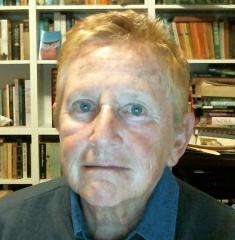It is not that common to be treated to a complete performance of all six of Bach’s Brandenburg Concertos. Madeleine Easton, leader and founder (in 2016) of Bach Akademie Australia, addressed the audience enthusiastically at a couple of points, declaring “we must be bonkers to do all six!” Clearly however there was method in the madness, not to mention passion combined with precision and virtuosity all around. It is also satisfactory to hear these works performed on period instruments with no more than two or three voices to a part, sounding as they might have done to Bach, had he ever heard them, which is doubtful.

The concertos were played in their accepted numerical order, leading with No. 1 (BWV1046), the most substantial in terms of length, structure and orchestration, and established the excellence of all that followed: well articulated, transparent, playing with excellent tempi and nice forward impetus. The natural horns (Michael Hugh Dixon and Jenny McLeod-Snyed) were as accurate as one ever hears them and Easton’s playing of the violino piccolo was particularly mellow in the second Allegro. The Menuetto sections were appropriately sonorous, while the first trio for oboes and bassoon (Ben Hoadley) was charming and lively, and the second one for horns and three oboes (Adam Masters, Kailen Cresp, Fiona McMillan) even more so.
In No. 2 (BWV1047), the ensemble was joined by trumpeter Richard Fomison and recorder player Mikela Oberg; the first movement was played with élan, and the musicians all displayed evident delight, as they did throughout. The second movement was marked by gracious interchange between recorder and oboe, and the trumpet returned in the third for a joyful culmination. No. 3 (BWV1048) is known for the 3-3-3 arrangement of violins, violas and cellos supported by the violone (Pippa MacMillan) and harpsichord (Nathan Cox), all demonstrating here tight ensemble playing. Easton had a small telling cadenza for the Adagio, and the third movement was fleet and light of touch. One doesn’t normally associate the term flamboyant with violas, but in this case these three stood out, led by Karina Schmitz. John Ma demonstrated his versatility by swapping from violin to viola as required.
No. 4 (BWV1049) features two recorders, warbling above all in the first movement in a rather pastoral effect, and Oberg was joined by Alicia Crossley. This also again highlighted the talents of Easton on violin. For No. 5 (BWV1050) the ensemble welcomed solo harpsichord player Neal Peres Da Costa for what is commonly considered to be the first ever keyboard concerto, but which also includes a flute part, which saw Oberg switching instruments. Keeping everything bubbling along of course is the harpsichord, and Peres Da Costa demonstrated his virtuosity, particularly in the rippling cadenza. The last movement was particularly rollicking.
Finally, No. 6 (BWV1051) unusually ditches any descant voice, featuring two violas, two viole da gamba and one cello (Daniel Yeadon) with the harpsichord and violone. This of course makes for quite a different sound world from all the others, with the violas again being uncharacteristically charismatic. The second movement was stately but intimate and the final Allegro an utterly joyful gigue-like experience, greeted with an extremely warm audience response as well it might have been. It would be hard to imagine a better or more enjoyable performance of every item.


